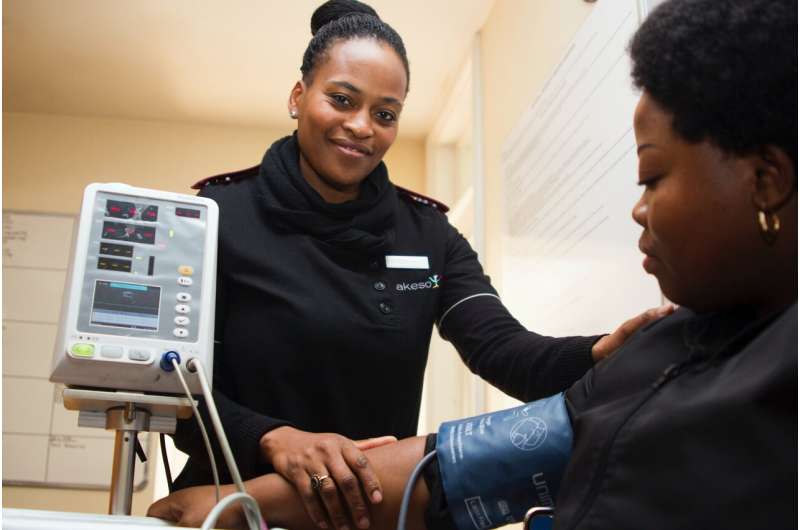Demographic requirements not improving enrollment of Black and Hispanic patients in acute leukemia clinical trials

Requirements instituted to address racial and ethnic disparities in clinical trial enrollment did not lead to increased inclusion of Black and Hispanic participants in clinical acute leukemia research, according to a new study in the journal Blood Advances. Researchers said the findings underscore the need to create targeted enrollment diversification strategies to ensure all patients are represented.
Leukemia, a cancer affecting blood cells, has several subtypes including acute myeloid leukemia (AML), which is one of the most common leukemias in adults, and acute lymphoid leukemia (ALL), the most common in children. Previous research has identified biologic factors, health behaviors, and structural barriers associated with worse outcomes for Hispanic, Black, and Asian leukemia patients. Some of the factors contributing to the disparities, including lower rates of treatment, higher levels of community poverty, and public insurance, have been uncovered. Yet the extent of underrepresentation of these racial and ethnic groups in clinical trials, and the ways that underrepresentation may affect treatment and outcomes for acute leukemia, remains unclear.
"Underrepresentation in clinical trials can bias how we develop drugs and administer care, which can then perpetuate treatment disparities for members of historically disadvantaged groups," said study author Andrew Hantel, MD, of the Dana-Farber Cancer Institute. "There are a lot of ideas about different actions the hematologic oncology community can take to improve enrollment of diverse populations in clinical trials, so we aimed to generate specific data to spur a change for this issue."
Researchers assessed data from 260 AML and ALL trials reported to clinicaltrials.gov from 2002 to 2017. They compared data on the race and ethnicity of participants in the trials to the annual disease incidence rates in the Surveillance, Epidemiology, and End Results (SEER) cancer database to determine relative enrollment rates for five groups: non-Hispanic white, non-Hispanic Black, non-Hispanic Asian, Native American/Alaska Native, and Hispanic. They found that in both AML and ALL trials, non-Hispanic white patients were more likely to be enrolled compared to Black, Asian, Native American, and Hispanic patients.
In the late 2000s, several policies were introduced to reduce disparities by promoting data transparency through public demographic reporting. These included a 2007 act by the U.S. Food and Drug Administration (FDA) requiring researchers to disclose their trial demographics within one year of study completion, and updates to the Declaration of Helsinki deeming public registration of trials and disclosure of enrollee demographics obligatory research practices. Dr. Hantel and his team compared data on acute leukemia trials before and after the establishment of these requirements and found that the proportion of trials disclosing participant race increased significantly, from 44.2% before the policies to 60.2% after.
However, when the researchers examined changes in enrollment within each racial and ethnic category, they found that enrollment of both Black and Hispanic patients was significantly lower in the period after the reporting requirements for both AML and ALL trials.
"Proportionately more adult and industry-sponsored trials started reporting demographic data. Since these trials had greater disparities, this means that relative enrollment of Black and Hispanic patients decreased, or that trials that were not reporting demographics are now reporting and we can simply see the deeper disparities that already existed," said Dr. Hantel.
Enrollment of patients of racial and ethnic minorities in AML and ALL trials is especially important because identifying the specifics of the acute leukemia patient population—including variations in disease prevalence and outcomes associated with race and ethnicity—is vital to determining the best methods of care, and in turn, unraveling health care disparities, said Dr. Hantel.
"It is essential that we capitalize on the new and exciting treatments in the last ten years that have changed leukemia prognosis," said Dr. Hantel. "These data are a first step toward equitably providing these better, newer treatments to all."
More information: Andrew Hantel et al, Racial and Ethnic Enrollment Disparities and Demographic Reporting Requirements in Acute Leukemia Clinical Trials, Blood Advances (2021). DOI: 10.1182/bloodadvances.2021005148

















